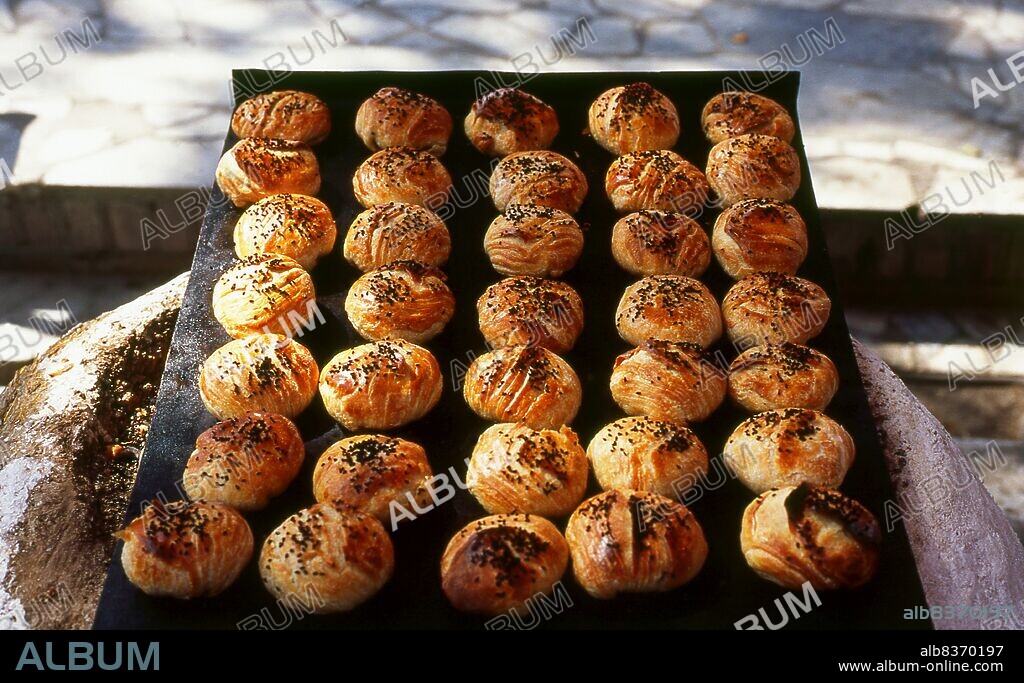alb8370197
Uzbekistan: Samsa< / i> (Samosas; baked flaky pastry filled with meat and onions) on a hot tray at a stall in the main market, Samarkand (2000)

|
Añadir a otro lightbox |
|
Añadir a otro lightbox |



¿Ya tienes cuenta? Iniciar sesión
¿No tienes cuenta? Regístrate
Compra esta imagen

Título:
Uzbekistan: Samsa< / i> (Samosas; baked flaky pastry filled with meat and onions) on a hot tray at a stall in the main market, Samarkand (2000)
Descripción:
Ver traducción automática
Samarkand (Uzbek: Samarqand, from Sogdian: 'Stone Fort' or 'Rock Town') is the second-largest city in Uzbekistan and the capital of Samarqand Province. The city is most noted for its central position on the Silk Road between China and the West, and for being an Islamic centre for scholarly study.
. In the 14th century it became the capital of the empire of Timur (Tamerlane) and is the site of his mausoleum (the Gur-e Amir). The Bibi-Khanym Mosque remains one of the city's most notable landmarks. The Registan was the ancient center of the city.
. In the 14th century it became the capital of the empire of Timur (Tamerlane) and is the site of his mausoleum (the Gur-e Amir). The Bibi-Khanym Mosque remains one of the city's most notable landmarks. The Registan was the ancient center of the city.
Crédito:
Album / Universal Images Group / David Henley / Pictures From History
Autorizaciones:
Modelo: No - Propiedad: No
¿Preguntas relacionadas con los derechos?
¿Preguntas relacionadas con los derechos?
Tamaño imagen:
4923 x 3029 px | 42.7 MB
Tamaño impresión:
41.7 x 25.6 cm | 16.4 x 10.1 in (300 dpi)
 Pinterest
Pinterest Twitter
Twitter Facebook
Facebook Copiar enlace
Copiar enlace Email
Email
